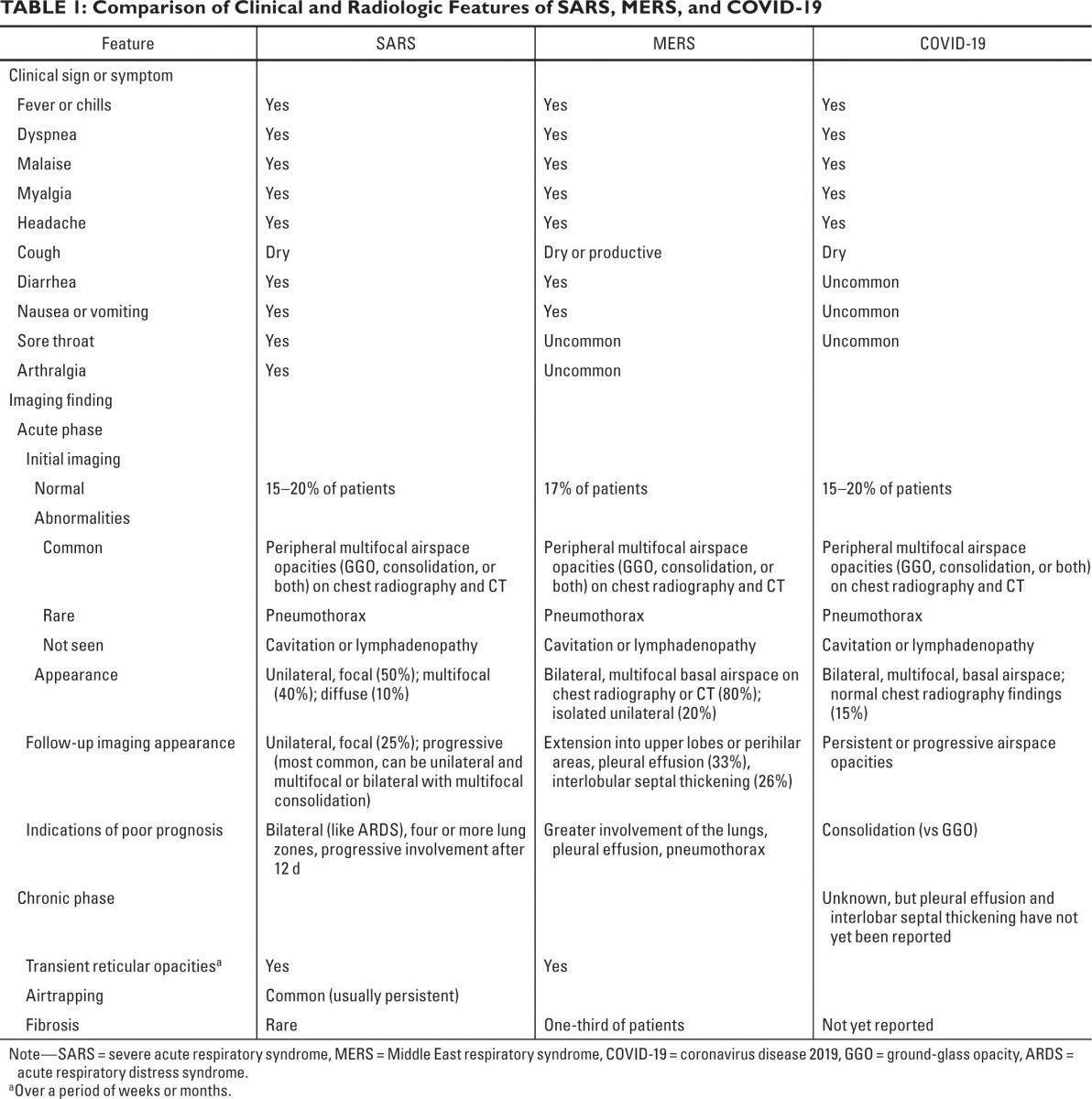Coronavirus Diagnostics: New Medical Imaging Study Shows Overlaping Features Of SARS-CoV-2 Coronavirus Induced Covid-19 Disease With That Of SARS and MERS
Source: Coronavirus Diagnostics Mar 01, 2020 5 years, 8 months, 3 weeks, 17 hours, 38 minutes ago
Latest On Coronavirus Diagnostics: A new imaging study by the University Of California reports that although the imaging features of novel coronavirus disease 2019 or Covid-19) are variable and nonspecific, detailed analysis do indicate "significant overlap" with those of severe acute respiratory syndrome (SARS) and Middle East respiratory syndrome (MERS).
Typically, Covid-19 is diagnosed on the presence of pneumonia symptoms (e.g., dry cough, fatigue, myalgia, fever, dyspnea), as well as recent travel to China or other high risk countries or known exposure.
.jpg) A and B, Initial CT images obtained show small round areas of mixed ground-glass opacity and consolidation (rectangles) at level of aortic arch (A) and ventricles (B) in right and left lower lobe posterior zones.C and D, Follow-up CT images obtained 2 days later show progression of abnormalities (rectangles) at level of aortic arch (C) and ventricles (D), which now involve right upper and right and left lower lobe posterior zones. Credit: American Journal of Roentgenology (AJR)
A and B, Initial CT images obtained show small round areas of mixed ground-glass opacity and consolidation (rectangles) at level of aortic arch (A) and ventricles (B) in right and left lower lobe posterior zones.C and D, Follow-up CT images obtained 2 days later show progression of abnormalities (rectangles) at level of aortic arch (C) and ventricles (D), which now involve right upper and right and left lower lobe posterior zones. Credit: American Journal of Roentgenology (AJR)
Chest imaging plays a vital role in both assessment of disease extent and follow-up.
Dr Melina Hosseiny of the University of California at Los Angeles, as per her review of the present clinical literature concerning Covid-19, concluded, "Early evidence suggests that initial chest imaging will show abnormality in at least 85% of patients, with 75% of patients having bilateral lung involvement initially that most often manifests as subpleural and peripheral areas of ground-glass opacity and consolidation."
She added that furthermore, "older age and progressive consolidation" may imply an overall poorer prognosis.
It must be noted significantly that unlike SARS and MERS, where initial chest imaging abnormalities are more frequently unilateral; Covid-19 is more likely to involve both lungs on initial imaging.

Dr Hosseiny told
Thailand Medical News, "To our knowledge, pleural effusion, cavitation, pulmonary nodules, and lymphadenopathy have not been reported in patients with Covid-19."
In addition, the researchers recommended CT for follow-up in patients recovering from Covid-19 to evaluate long-term or even permanent pulmonary damage, including fibrosis as seen in SARS and MERS infections.
The study findings has been published in the American Journal of Roentgenology (AJR).
Reference : Melina Hosseiny et al, Radiology Perspective of Coronavirus Disease 2019 (COVID-19): Lessons From Severe Acute Respiratory Syndrome and Middle East Respiratory Syndrome, American Journal of Roentgenology (2020).
DOI: 10.2214/AJR.20.22969
For more developments on
Coronavirus Diagnostics, check out:
tps://www.thailandmedical.news/articles/coronavirus">https://www.thailandmedical.news/articles/coronavirus
.jpg)
